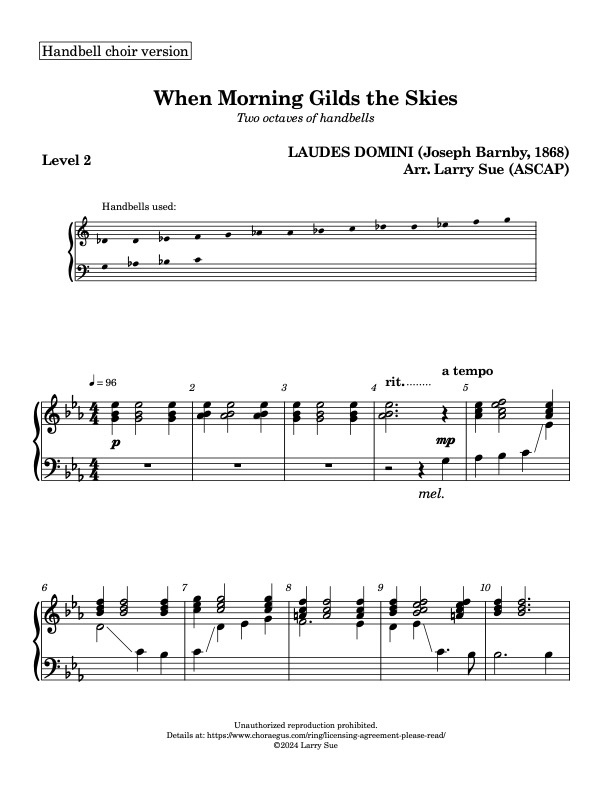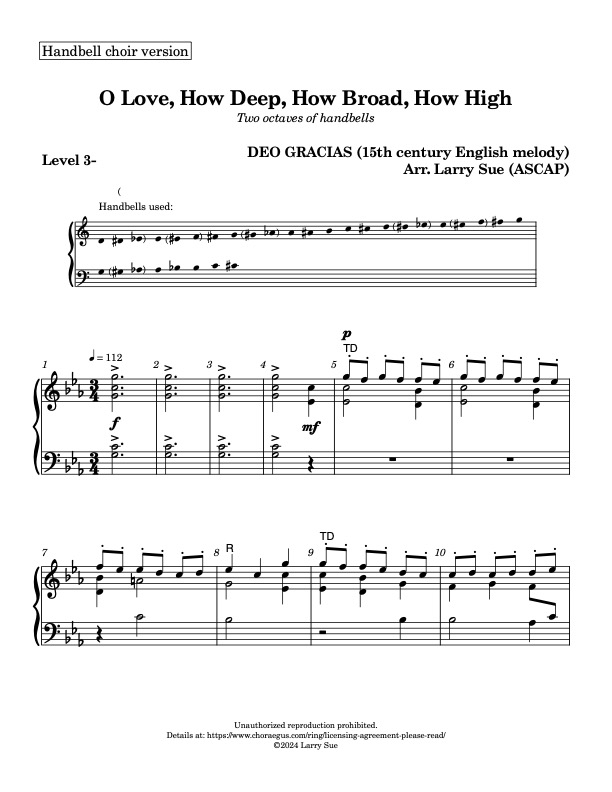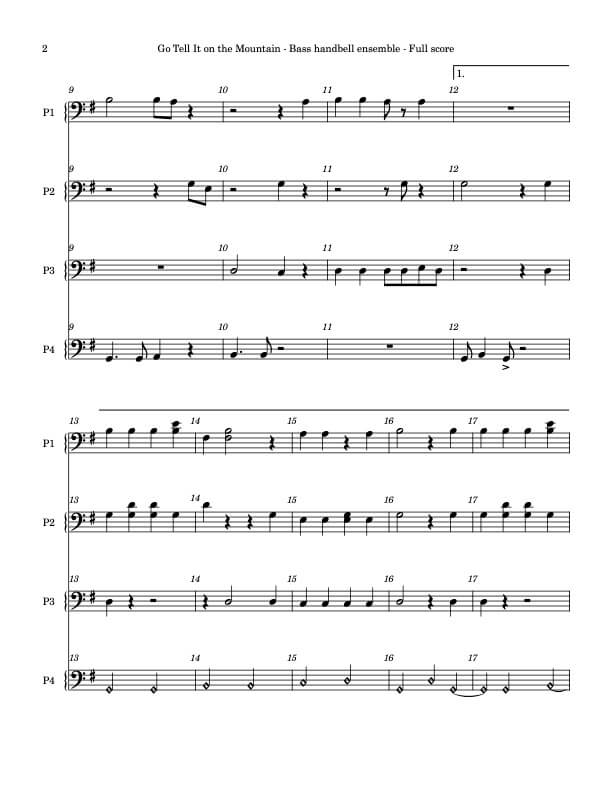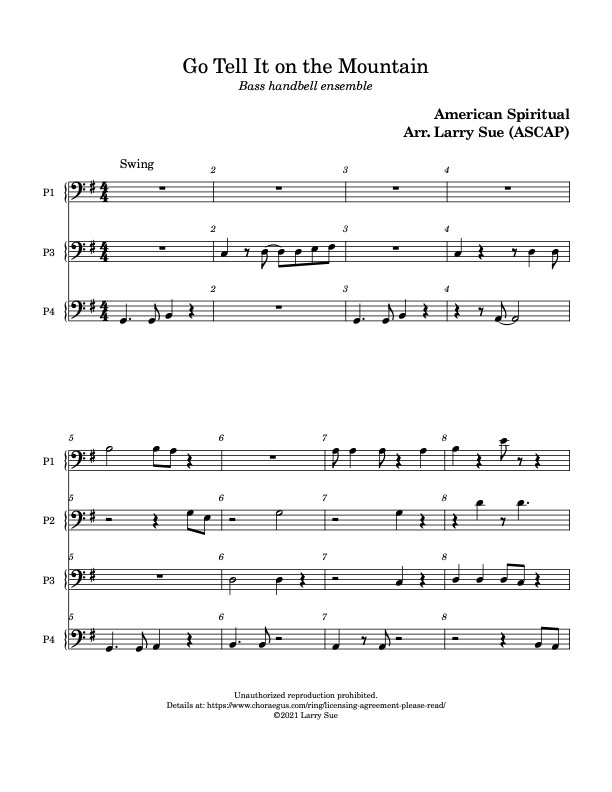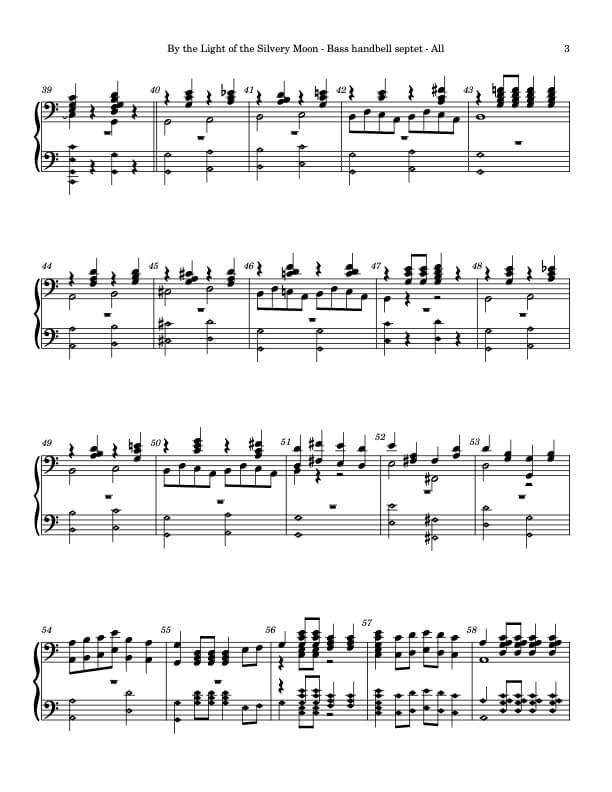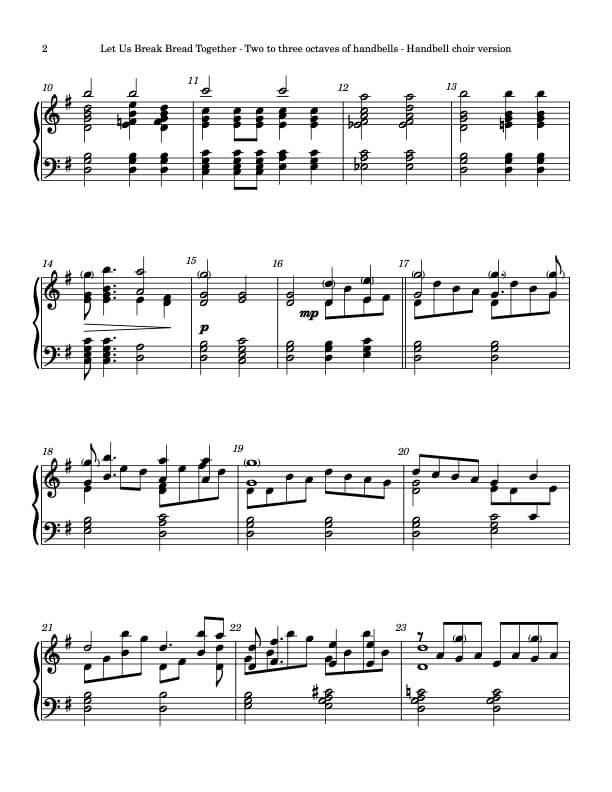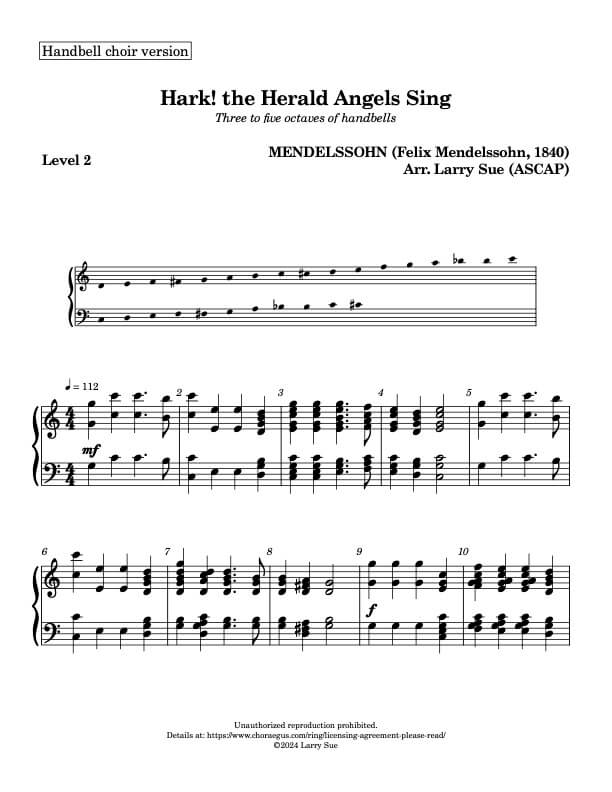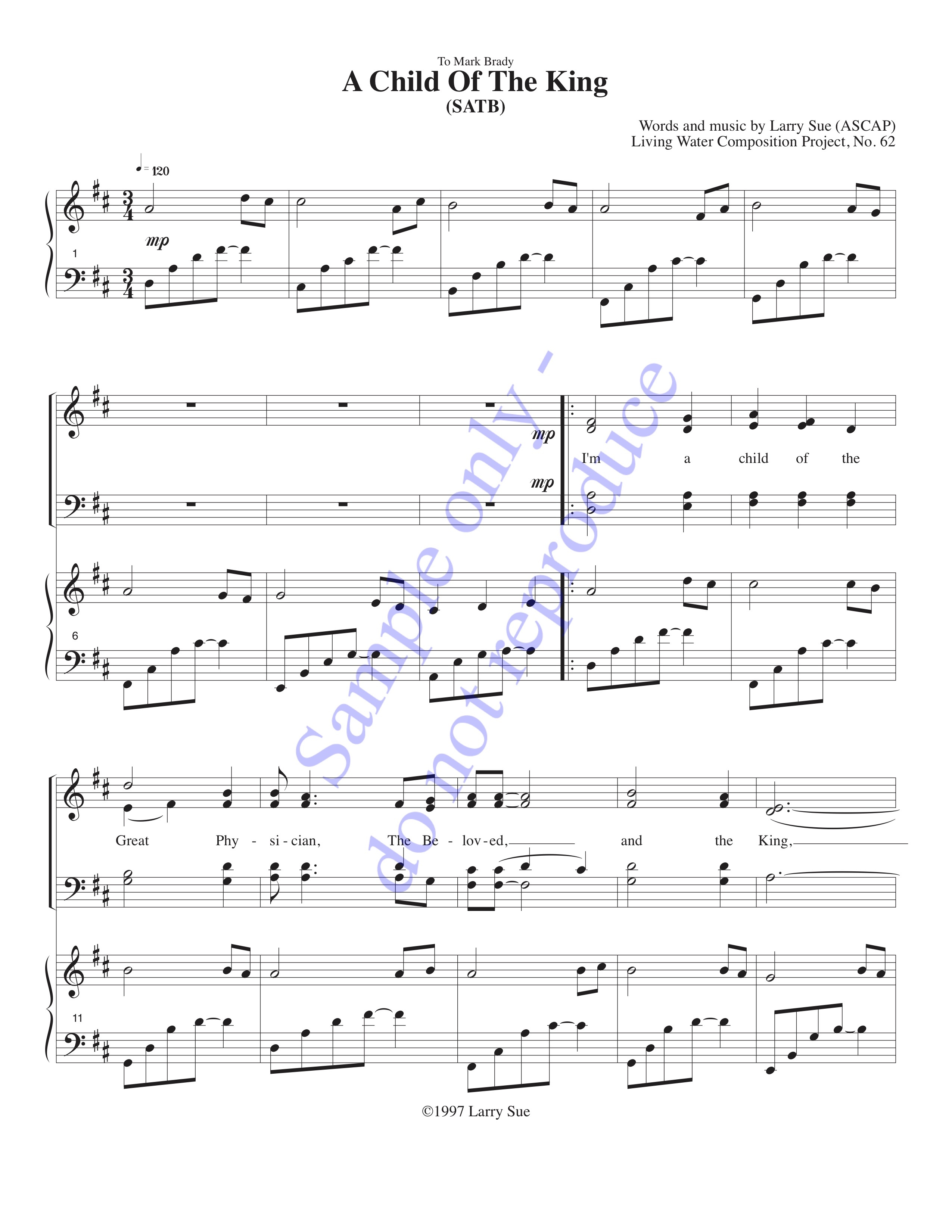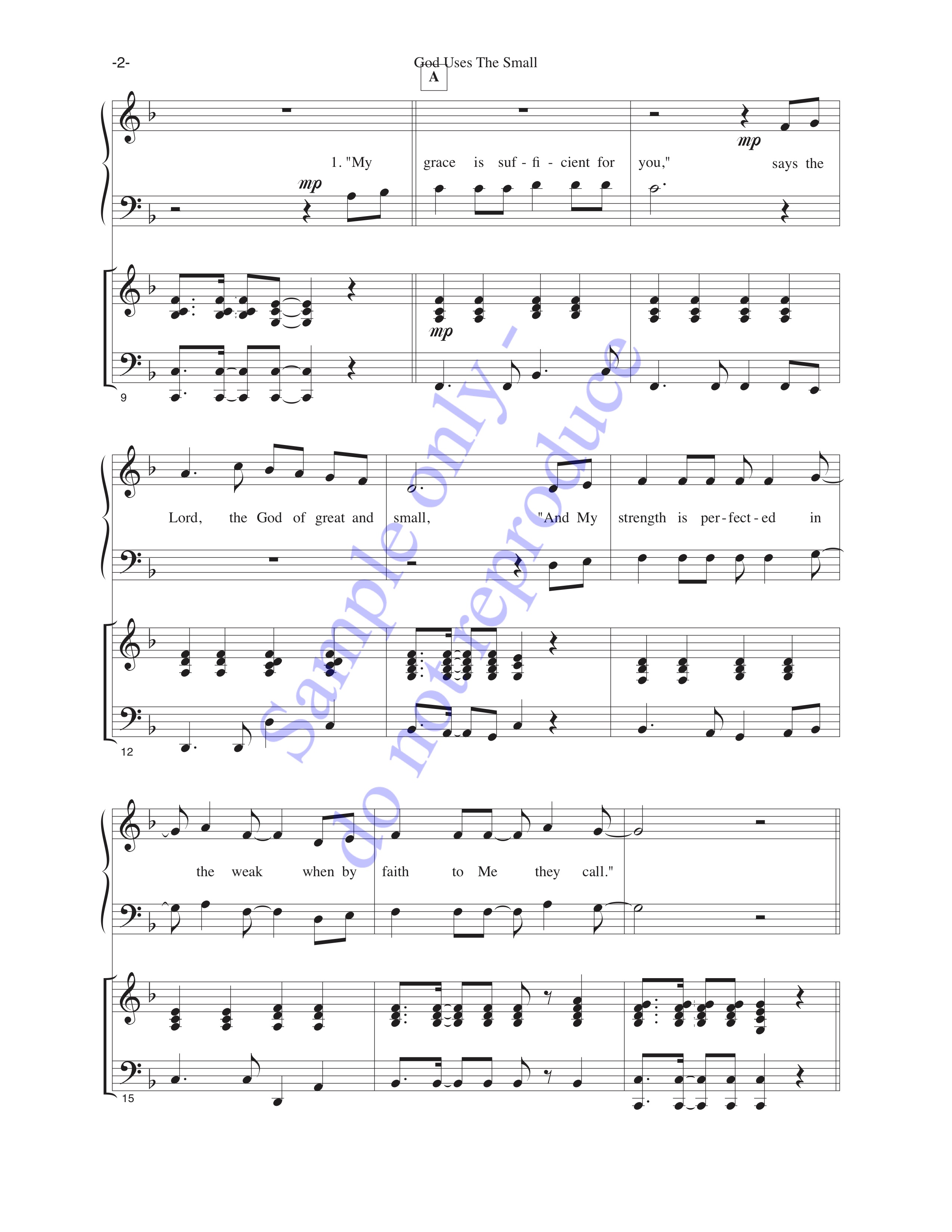Stanley Myers’ Cavatina, brings a thoughtful air to the listener. Our arrangement for three to five octaves of handbells imitates the openness and simplicity of the original classical guitar score. Your ensemble will find it quite accessible in terms of the written notes, but will also experience tremendous scope for development of expression as they …
Category: Choraegus
LDZ Arrangements – Spiritual Boogie – Bass handbell ensemble
Welcome to Spiritual Boogie, the very first piece played by Low Ding Zone. If you can guess, the formation of LDZ meant that we had to create our own repertoire. This one was based on the common chord sequences in the spirituals Swing Low, Sweet Chariot, When the Saints Come Marching In, and This Train …
Mar 06
O Love, How Deep, How Broad, How High (DEO GRACIAS) (Handbells, 2 octaves, Level 3-)
O Love, How Deep, How Broad, How High attempts the impossible task of describing God’s transcendent qualities in mere human words. You can’t explain His eternity in a finite amount of time, nor His omniscience with limited experience, nor his holiness from a sinner’s point of view. Se just have to give it all we …
Feb 28
Be Thou My Vision (SLANE) (eight/twelve handbells and piano)
We received a question about whether we had an accompanied twelve-bell arrangement of Be Thou My Vision the other day. A quick look at our catalog revealed that we had an unaccompanied twelve-bell arrangement and an accompanied eight-bell arrangement. So, something close twice, but from different angles. So we’ve taken the accompanied eight-bell score and …
Love is Patient, Love is Kind – for solo voice, piano, and handbells
Barbara Butcher’s wedding song Love is Patient, Love is Kind presents I Corinthians 13 elegantly with several options. The long version includes a Scripture reading for the singer or a lector; the short version has an accompaniment interlude. Both versions have very accessible parts for eight handbells. The score package includes both the long and …
Oct 20
O Little Town of Bethlehem (FOREST GREEN) (Handbells, 2 octaves, Level 2+)
The Christmas carol O Little Town of Bethlehem reflects the quiet joy of the Savior’s birth. This arrangement is of the hymn tune FOREST GREEN, the melody more often used for Phillip Brooks’ lyric. O little town of Bethlehem, how still we see thee lie! Above thy deep and dreamless sleep the silent stars go …
Aug 30
The Star-Spangled Banner – Twelve handbells
Francis Scott Key wrote the words for “The Star-Spangled Banner” in 1814 after seeing the American flag raised over Fort McHenry in celebration of victory. The modern rendition (most often at patriotic and sports events, with biennial playings at the Olympics) usually consists of just Key’s first verse. All four of his verses, as kept …
Aug 19
Hark! the Glad Sound – Twelve handbells
The hymn Hark! the Glad Sound, arranged for twelve handbells, anticipates the Savior’s coming. It speaks of the triumphant kingdom He will establish, and is suitable for Advent or Palm Sunday. Hark, the glad sound! The Savior comes, the Savior promised long! Let every heart prepare a throne, and every voice a song. He comes …
Jun 24
A Sparrow on Christmas Morning (Handbells, 3 or 5 octaves, plus handchimes, 3 octaves, Level 3+)
Otto Kotilainen’s Finnish carol A Sparrow on Christmas Morning tells the story of a sparrow that has exhausted his summer food supply. In danger of starving in the winter cold, he visits a young girl who offers him a seed to eat. The sparrow gratefully accepts the offer, and then reveals that he, her deceased …
Jun 20
In what order should I hold my bells?
The question of how to configure four-in-hand bells (usually for eight-bell duets or twelve-bell trios) comes up every now and then. The mental effort required to manage four notes simultaneously dictates a need to make as much of that thinking as automatic as possible. One school of thought goes with the idea of holding the …


